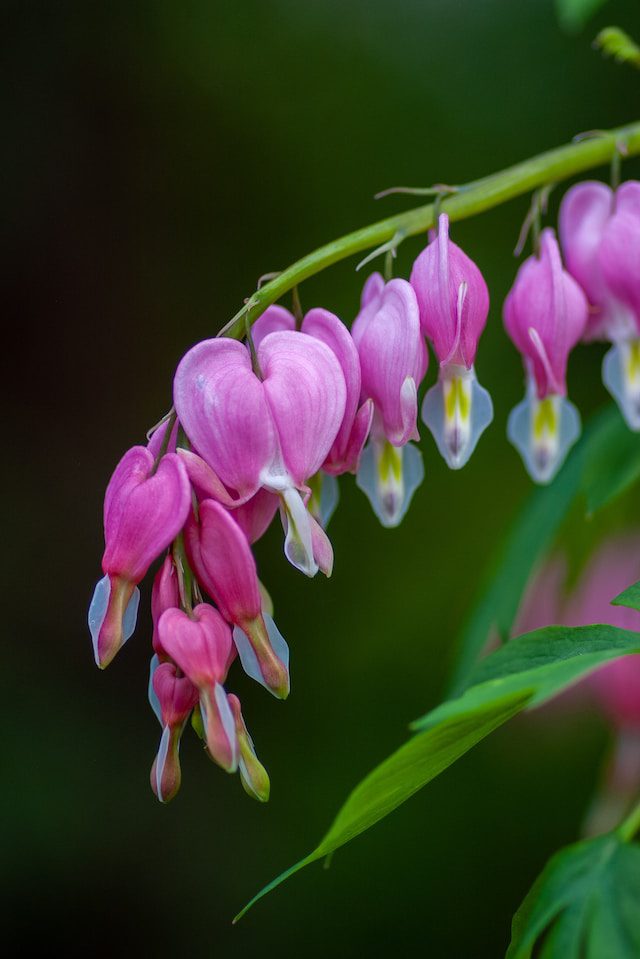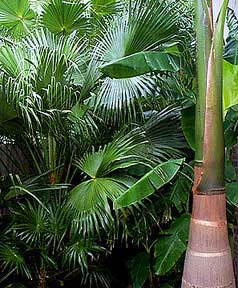Table of Contents
Welcome to the world of Bleeding Heart (Dicentra spectabilis) flowers! Whether you’re a beginner or an intermediate gardener, this article will guide you through the beauty and care of these captivating blooms.
In this guide, we’ll explore the physical characteristics and symbolism of Bleeding Heart flowers. We’ll also provide practical tips for cultivation and maintenance, including planting techniques, seasonal care, and design ideas. You’ll find answers to common questions and solutions for troubleshooting issues that may arise.
Understanding the Bleeding Heart
The Bleeding Heart flower is a captivating and beloved plant among gardeners of all levels of experience. With its unique charm and distinctive characteristics, the Bleeding Heart adds a touch of elegance to any garden landscape.
When you first lay eyes on the Bleeding Heart, you’ll be immediately captivated by its heart-shaped flowers that gracefully dangle from arching stems. The flowers come in various shades, including pink, white, and even deep red, each possessing its own distinct allure. Complementing the flowers are delicate, fern-like foliage that adds an elegant touch to the overall appearance of the plant.
Beyond its aesthetic appeal, the Bleeding Heart carries a rich symbolism and folklore that have fascinated gardeners for centuries. In folklore, the Bleeding Heart is often associated with emotions of love and compassion. Its unique shape has led to various legends and stories, often depicting the flower as a symbol of a broken heart or unrequited love.
Cultivation Tips
To cultivate the Dicentra spectabilis successfully, it’s important to provide the ideal growing conditions for this enchanting flower. Understanding its specific requirements will help you create an environment in which it can thrive and showcase its beauty.
Sunlight Requirements
The Bleeding Heart prefers partial shade to filtered sunlight. It thrives in locations where it receives a few hours of direct morning sunlight, followed by dappled shade throughout the day. Excessive exposure to direct sunlight can lead to wilting and scorching of the leaves.
Soil Preferences
Provide the Bleeding Heart with moist, well-draining soil for optimal growth. It prefers soil that retains some level of moisture without becoming waterlogged. Amending the soil with organic matter, such as compost or well-rotted manure, can improve drainage while enhancing the soil’s ability to retain moisture.
Climate Considerations
The Bleeding Heart is best suited for temperate and cooler regions. It generally thrives in USDA hardiness zones 3 to 9. However, some cultivars may adapt well to warmer climates if provided with ample shade and moisture.
Planting Preparation
Select a planting site that offers partial shade and has soil with good drainage. Clear the area of weeds and debris, and loosen the soil to a depth of approximately 12 inches. Incorporate organic matter into the soil to improve its structure and fertility.
Planting Technique
Dig a hole slightly larger than the root ball of your Bleeding Heart plant. Place the plant in the hole, ensuring that the crown is at ground level. Backfill the hole with soil, gently firming it around the roots. Water the plant thoroughly after planting to settle the soil.
By following these cultivation tips, you can create an optimal environment for the Bleeding Heart to flourish in your garden.
Planting and Maintenance
Proper planting and maintenance practices are key to ensuring the health and vitality of your Bleeding Heart plants. In this section, we’ll provide you with step-by-step instructions and valuable tips to help you plant and care for your Bleeding Heart flowers.
Planting Bleeding Heart
– Choose a location that provides the ideal conditions of partial shade and well-draining soil.
– Dig a hole slightly larger than the root ball of your Bleeding Heart plant.
– Place the plant in the hole, ensuring the crown is level with or slightly above the soil surface.
– Backfill the hole with soil, gently firming it around the roots.
– Water the newly planted Bleeding Heart thoroughly to settle the soil.
Watering
– Bleeding Heart plants prefer consistently moist soil, but be cautious not to overwater, as they are susceptible to root rot.
– Water deeply when the top inch of soil feels dry, providing enough moisture to reach the root zone.
– Apply a layer of organic mulch around the base of the plant to help retain soil moisture and suppress weed growth.
Fertilization
– Apply a balanced, slow-release fertilizer in spring as new growth emerges.
– Follow the product instructions for the appropriate amount and method of application.
– Avoid over-fertilization, as excessive nutrients can lead to weak growth and diminished flowering.
Pest and Disease Control
– Monitor your Bleeding Heart plants regularly for common pests such as slugs and snails.
– Use organic pest control methods such as handpicking or applying diatomaceous earth around the plants.
– Keep an eye out for signs of powdery mildew or fungal diseases, and promptly address them with appropriate fungicides or organic treatments.
Deadheading and Pruning
– Remove faded or spent flowers to encourage continued blooming and a tidy appearance.
– After the blooming period, you can perform a light pruning to remove any damaged or excessive growth.
– Avoid heavy pruning during the growing season, as Bleeding Heart plants prefer minimal disturbance once established.
By following these planting and maintenance guidelines, you’ll be well on your way to cultivating healthy and vibrant Bleeding Heart flowers.
Seasonal Care
Proper seasonal care is essential for the continued success of your Bleeding Heart (Dicentra spectabilis) plants. In this section, we’ll provide you with valuable tips to keep your Bleeding Heart thriving throughout the changing seasons.
Spring Care
– As new growth emerges in spring, apply a balanced, slow-release fertilizer following the product instructions.
– Monitor soil moisture levels and water accordingly, ensuring the soil remains consistently moist but not waterlogged.
– Mulch around the base of the plants to help retain moisture and suppress weed growth.
– Remove any weeds or competing vegetation that may encroach upon your Bleeding Heart plants.
Summer Care
– During hot summer months, monitor soil moisture levels closely and water deeply when the top inch of soil feels dry.
– Consider providing additional shade or using shade cloth to protect the plants from excessive heat and direct sunlight.
– Regularly inspect the plants for signs of pests, such as slugs and snails, and take appropriate measures to control them.
– Deadhead faded flowers to encourage continuous blooming and maintain a neat appearance.
Fall Care
– As the growing season comes to an end, reduce watering gradually to prepare the Bleeding Heart for dormancy.
– Allow the foliage to naturally yellow and die back, as this process helps the plant store energy for the following year.
– Once the foliage has completely withered, you can gently remove it, taking care not to disturb the dormant buds.
Winter Care
– In areas with harsh winters, provide a layer of organic mulch around the base of the plants to protect the root system from extreme cold.
– If the climate is particularly harsh, consider using a protective covering, such as burlap, to shield the plants from freezing temperatures and drying winds.
– Monitor moisture levels during winter, ensuring that the soil remains slightly moist but not saturated.
By following these seasonal care tips, you’ll provide the best conditions for your Bleeding Heart plants to thrive and flourish throughout the year.
Designing with Bleeding Heart
Designing with Bleeding Heart flowers can add a touch of elegance and charm to your garden. In this section, we’ll provide you with creative ideas and suggestions on how to incorporate into your garden design.
Cottage Gardens
– Bleeding Heart flowers are a classic choice for cottage gardens. Plant them alongside other traditional favorites like roses, peonies, and delphiniums.
– Create a charming focal point by planting Bleeding Heart near a rustic garden bench or trellis.
Woodland Settings
– The natural grace of Bleeding Heart makes them perfect for woodland gardens. Plant them beneath the dappled shade of trees or alongside ferns and hostas.
– Combine Bleeding Heart with other shade-loving plants like lungwort, foamflower, or Solomon’s seal for a lush woodland display.
Mixed Borders
– Incorporate into mixed borders for a vibrant burst of color and texture. Pair them with contrasting flowers like purple coneflowers, yellow coreopsis, or blue salvias.
– Consider intermingling with ornamental grasses for a dynamic and textural contrast.
Containers and Hanging Baskets
– Create stunning displays by planting Bleeding Heart in containers or hanging baskets. Choose containers with good drainage and use a well-draining potting mix.
– Combine with trailing plants like ivy, bacopa, or lobelia to create cascading arrangements.
Complementary Plants
Consider companion plants that enhance the beauty of Bleeding Heart. Good choices include astilbes, bleeding ferns, foamflowers, or coral bells.
– Pay attention to height variations, bloom times, and foliage textures to create visually appealing combinations.
Remember to provide adequate spacing between plants to allow room for growth and showcase their unique form. Experiment with different design styles and plant combinations to create your own personalized garden oasis.
Troubleshooting
Even with proper care, occasional challenges may arise when growing Bleeding Heart. In this section, we’ll address common troubleshooting issues and provide answers to frequently asked questions to help you overcome any hurdles and ensure the health and vitality of your plants.
Yellowing Leaves
– Yellowing leaves can be caused by overwatering, inadequate drainage, or nutrient deficiencies.
– Ensure proper soil drainage and adjust watering practices accordingly.
– Consider adding a balanced fertilizer to address any nutrient deficiencies.
Lack of Blooms
– A lack of blooms can be due to insufficient sunlight or improper pruning.
– Make sure your plants receive adequate light, preferably partial shade.
– Avoid heavy pruning during the growing season, as it may affect blooming.
Fungal Infections
– Common fungal infections include powdery mildew and leaf spot.
– Ensure proper air circulation around the plants by providing adequate spacing.
– Avoid overhead watering and remove any infected plant material promptly.
– Apply appropriate fungicides or organic treatments to control fungal infections.
FAQ
Water when the top inch of soil feels dry. Aim to keep the soil consistently moist but not waterlogged.
Yes, Bleeding Heart can be grown in containers as long as the containers have good drainage. Use a well-draining potting mix and water regularly.
Dividing Bleeding Heart plants is best done in early spring or early fall, when the plants are dormant.
The blooming period of Bleeding Heart typically lasts for several weeks in spring. Deadheading spent flowers can encourage extended blooming.
Conclusion
In this article, we’ve explored the captivating world of Bleeding Heart (Dicentra spectabilis) flowers, discovering their unique beauty, cultivation tips, and care guidelines. As you embark on your own journey, here’s a summary of the key points we’ve covered:
– Bleeding Heart flowers charm with their heart-shaped blooms and delicate foliage.
– They hold symbolism and folklore associated with love and compassion.
– Cultivate Bleeding Heart in partial shade with well-draining soil.
– Provide consistent moisture without overwatering.
– Consider the ideal planting site and incorporate organic matter for soil improvement.
– Fertilize with a balanced, slow-release fertilizer in spring.
– Monitor for pests and diseases, applying organic controls as needed.
– Deadhead spent flowers to encourage continued blooming.
– Follow seasonal care practices to support healthy growth and winter protection.
– Design with Bleeding Heart in cottage gardens, woodland settings, mixed borders, and containers.
– Select companion plants that complement the beauty of Bleeding Heart.
By following these guidelines and addressing common troubleshooting issues, you’ll create a vibrant garden filled with the elegance and charm of Bleeding Heart flowers.
We hope this article has provided you with the inspiration and knowledge to embark on your Bleeding Heart gardening adventure. Remember to share your experiences, questions, and garden creations with fellow enthusiasts. Let’s continue to celebrate the timeless beauty of Bleeding Heart flowers together!
Thank you for joining us on this journey, and may your garden flourish with the enchantment of Bleeding Heart blooms.




